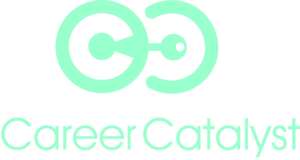Within the realm of human cognition, the “Internal” or “External” Frame of Reference metaprogram pattern exerts a profound influence, shaping the way individuals perceive and interpret the world around them.
This intricate pattern guides the formation of beliefs, the process of decision-making, and the construction of reality.
In this blog post, we will embark on a journey to unravel the intricacies of the “Internal” or “External” Frame of Reference pattern, We’ll delve into its intricacies, explore its impact on choices, and unveil its practical application in coaching.
The “Internal” or “External” Frame of Reference Metaprogram Pattern:
The “Internal” Frame of Reference pattern signifies an inclination to rely on personal experiences, values, and thoughts when forming judgments and making decisions.
Conversely, the “External” Frame of Reference pattern involves seeking external sources, opinions, or established standards to shape one’s beliefs and decisions.
Internal Frame of Reference:
Individuals embodying the “Internal” Frame of Reference pattern exhibit a reliance on their internal compass. They draw upon personal experiences, values, and beliefs to inform their judgments and decisions. This pattern often cultivates authenticity and self-trust.
External Frame of Reference:
The “External” Frame of Reference pattern manifests as a preference for external validation. Individuals aligned with this pattern seek guidance from external sources, such as experts, feedback from others, or established norms, to shape their beliefs and decisions.
Applying the “Internal” or “External” Frame of Reference Pattern in Coaching:
Identifying the Pattern:
Actively listen to your client’s language to discern their perceptual orientation. Those attuned to an “Internal” Frame of Reference may use phrases like “In my experience,” “I believe,” or “From my perspective.” Individuals resonating with an “External” Frame of Reference might express themselves as “Experts suggest,” “Consensus indicates,” or “Research shows.”Goal Setting:
Internal Frame of Reference:
Empower clients with this pattern to formulate goals harmonious with their core values and aspirations:- “Which goals resonate deeply with your personal beliefs?
- “How can your inner convictions guide your goal-setting journey?
- “Imagine the fulfillment of achieving goals that genuinely reflect your beliefs.
External Frame of Reference:
Assist clients in aligning goals with external benchmarks and recognized standards:
- “Which goals align with the benchmarks set by your industry’s experts?
- “How can you leverage external insights to set goals reflecting widely acknowledged accomplishments?
- “Envision the sense of achievement when goals meet established benchmarks.
Decision-Making:
Internal Frame of Reference:
Encourage “Internal” clients to trust their intuition and inner insights when making decisions:
- “How does this decision resonate with your core beliefs and experiences?
- “Imagine the empowerment of decisions aligned with your authentic self.
- “What significance do your personal values hold in guiding your decisions?
External Frame of Reference:
Guide “External” clients in seeking informed opinions and established standards:
- Which insights from experts or reputable sources can guide your decision?
- Imagine the assurance of decisions informed by recognized standards and best practices.
- How can external feedback contribute to well-informed decisions?
Thought-Provoking Coaching Questions:
- Do you find yourself inclined to trust your personal experiences and values, or do you tend to seek external opinions?
- How do your personal experiences contribute to your judgments and decisions?
- In what ways does external validation shape your decision-making process?
- How can you harmonize your internal beliefs with external perspectives to make comprehensive decisions?
- Which goals align with your core values and beliefs?
- What external benchmarks or industry standards could guide your goal-setting process?
- How can you effectively leverage both personal insights and external feedback to facilitate balanced decisions?
The “Internal” or “External” Frame of Reference metaprogram pattern holds the key to perceiving and processing information.
Coaches who recognize this pattern can customize their approach, aiding clients in setting goals and making decisions that align with their genuine selves or widely acknowledged norms.
By mastering and applying the intricacies of this pattern, coaching becomes a potent instrument for fostering self-awareness and driving transformative change in the lives of clients.





